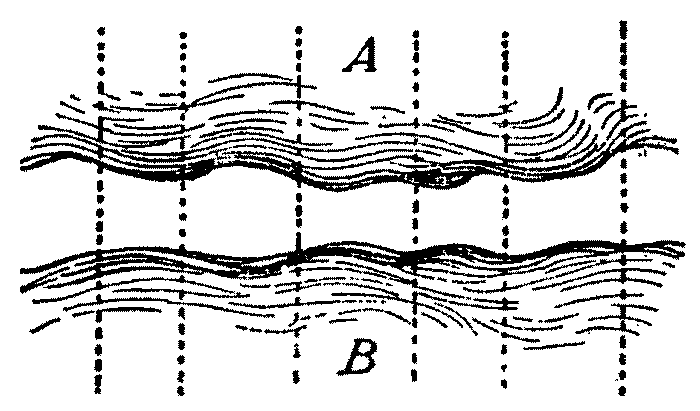One of the many after effects of Trump’s election has been an altogether astonishing flowering of high fallutin exercises in cultural analysis. I particular enjoy those who play with popularized (populist?) deconstructionism. So, let’s join the (deep?) play.
Most of my own intellectual education has been plagued by the fundamental mis-readings of Saussure and Lévi-Strauss led by Derrida ([1967] 1978) and others. In various ways if have tried to write against deconstructionism, sometimes specifically (1994),
and mostly by implication. And yet, I have also felt party to many of these debates, particularly when they involve plays with “facts” and fiction, truth and relativism, history and narratives, and indeed the nature of reality (ontology?).
So, when the New York Times, as it regularly does, plays with “truth … that is always changing” (NYT, “How to fix the Met,” 3/1/2107) I could not resist tweeting and playing with the Times nemesis (and vice versa)—the author of the wonderfully truthy “truthful hyperbole.”
 What I then found out in another exercise in cultural analysis was worth more than a chuckle. It involves an extended metaphor on Silicon Valley idealistic and nihilistic ontology (as reflection on the nature of being, existence, and reality). This one comes from one of these mythical young white men that can claim, as does his Wikipedia page, that “the total valuation of Y Combinator companies has surpassed $65 billions”(read on March 2017). This young man is Sam Altman and the piece was written by Tad Friend of the New Yorker (October 2016 issue).
What I then found out in another exercise in cultural analysis was worth more than a chuckle. It involves an extended metaphor on Silicon Valley idealistic and nihilistic ontology (as reflection on the nature of being, existence, and reality). This one comes from one of these mythical young white men that can claim, as does his Wikipedia page, that “the total valuation of Y Combinator companies has surpassed $65 billions”(read on March 2017). This young man is Sam Altman and the piece was written by Tad Friend of the New Yorker (October 2016 issue).
A few sentences from this piece were picked up by multiple media outlet under such titles as “Tech billionaires think we live in the Matrix and have asked scientists to get us out” (CNBC, 10/7/2016) or “Many of the world’s richest and most powerful people, including Elon Musk and Bank of America, think that we live in a simulation of the real world” (Independent, 10/6/2016)
I found this thread after coming to a not clearly authored page where the writer wonders about such “bizarre events” as the mistake at the Oscars, this year’s Super Bowl, and, of course, Trump’s election. So, he (I will caricature him as male, but I am not sure) wonders whether:
“we are living in the Matrix, and something has gone wrong with the controllers. This idea was, I’m told, put forward first and most forcibly by the N.Y.U. philosopher David Chalmers: What is happening lately, he says, is support for the hypothesis that we are living in a computer simulation and that something has recently gone haywire within it. The people or machines or aliens who are supposed to be running our lives are having some kind of breakdown. There’s a glitch, and we are in it. [Such events] makes no sense at all in the ‘real world’.
There may be not merely a glitch in the Matrix. There may be a Loki, a prankster, suddenly running it. After all, the same kind of thing seemed to happen on Election Day: the program was all set, and then some mischievous overlord – whether alien or artificial intelligence doesn’t matter – said, “Well, what if he did win? How would they react?” “You can’t do that to them,” the wiser, older Architect said. “Oh, c’mon,” the kid said. “It’ll be funny. Let’s see what they do!” And then it happened. We seem to be living within a kind of adolescent rebellion on the part of the controllers of the video game we’re trapped in, who are doing this for their strange idea of fun. (crystalinks.com 2/26/17)
As written by Ted Friend, the statement attributed to Sam Altman on “two tech billionaires have gone so far as to secretly engage scientists to work on breaking us out of the simulation” is a paraphrase rather than a quote, and is not the main point of the piece. But it is the sentence that caught the eye of many journalists in the United States and England. I guess, it is “fun news” (somewhere on the continuum towards “fake news”).
Actually, it may be “fake news” that Sam Altman, or any of the other billionaires mentioned, actually “believe,” in the strong sense of the verb, that we are living in a Matrix-like simulation, whether run by wise aliens or trickster adolescents. No sane person would believe that, would they? Maybe Altman was just burnishing his image as not only a monument to successful greed but also as Silicon Valley seer and (pop) philosopher. America has produced many such billionaire seers. Altman will not be the last.
What is more interesting to me is that Altman is channeling a long and very real strain in Western philosophy: the idealism most extremely stated by Bishop George Berkeley in the early 18th century. Most analysis of the Matrix movies prefer to mention Descartes (Plato, etc.) but Cartesian doubt was about epistemology (how to we know?) rather than ontology (how is ‘is’?). In the 20th century, the early Derrida proposed a new version of classical ontological idealism when he wrote that, and I paraphrase, “there is no center that can escape the play of discourses” (1967: 411). All is discourse (language). There are no “hors-textes” (outside text) that might take us away from language. Popularized, this late 20th century idealism can be developed in further texts affirming that we cannot be sure that an experience of snow falling outside a writer’s window has not been “written” by some very clever programmer and fed directly into some imperceptible artificial reality goggle: the Matrix. Reality IS a text, written in mysterious algorithms.
There is of course no way to, rationally, disprove this hypothesis since the very arguments against it could have been written by the clever programmer. The hypothesis seems to me equivalent to the biblical creationism that estimates the age of the universe at something like 6000 years: all the evidence that it is older (dinosaurs, echos of the Big Bang) could easily have been written by God into what only looks like a record of earlier events.
Now, of course, there are other ontologies that are well captured by Saussure’s wonderful, and easy to mistranslate, diagram about the segmentation of continuums ([1915] 1966: 112).  There, the wavy lines are an attempt to capture the mystery that language imperfectly reveals as it works at representing this mystery using the vagaries of human affordances (vocal box, faces and arms, etc. Not to mention a peculiar brain). If any of this was “designed” it was not by an efficiency expert. As Merleau-Ponty once said, and I paraphrase and expand, “meaning is in the silence between the words” ([1969] 1973: 43). Mystery is not empty. Stuff (good and bad) happens. Or, as another wise man put it:
There, the wavy lines are an attempt to capture the mystery that language imperfectly reveals as it works at representing this mystery using the vagaries of human affordances (vocal box, faces and arms, etc. Not to mention a peculiar brain). If any of this was “designed” it was not by an efficiency expert. As Merleau-Ponty once said, and I paraphrase and expand, “meaning is in the silence between the words” ([1969] 1973: 43). Mystery is not empty. Stuff (good and bad) happens. Or, as another wise man put it:
There are more things in heaven and earth, Horatio,
Than are dreamt of in your philosophy.
Hamlet to Horatio Hamlet (1.5.167-8) ).
References
References
Derrida, Jacques 1967 [1978] Writing and difference. Chicago: The University of Chicago Press
Merleau-Ponty, Maurice 1973 [1969] The prose of the world. Tr. by J. O’Neil. Evanston, IL: Northwestern University Press.
Saussure, Ferdinand de 1966 [1915] Course in General Linguistics. Tr. by W. Baskin. New York: McGraw-Hill.
 Print This Post
Print This Post